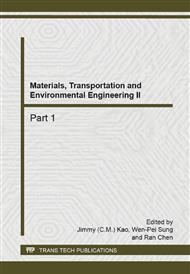p.2451
p.2455
p.2459
p.2463
p.2468
p.2489
p.2495
p.2501
p.2511
Vernacular Landscape Leading the Way: The Holistic Protection and Revival of Hani’s Ancient Village under the Background of Yuanyang Terraced Fields’ Register on the World Heritage
Abstract:
Ancient village Azheke, located in Yunnan province in China, surrounded by magnificent Yuanyang Terraced Field and lush forested Mountains, is an excellent living model of Hani people’s vernacular landscape reflecting the wisdom of sustainable land use, agricultural cultivation and stewardship. However, the overwhelming globalization and urbanization construction bring about many problems to the ancient village, such as the currently deteriorating of natural environment, the declining of the ancient knowledge and skills of agricultural cultivation, the discarding of traditional life style with meaningful distinctive traits and the oblivion of cultural identity and religious spirits. Targeting on these challenges, this paper proposes a holistic approach to revive and rescue the ancient village. From the perspective of landscape, this study divided the vernacular cultural landscape into four processes, i.e. ecological, productive, daily & social life, spatial & religious landscape processes, considering the ancient village as an organism with its living demands. Based on the methods of scenes recovery and regeneration of vernacular landscape security network, this approach restores the scenes with the critical landscape elements in Hani vulgar life and unique culture, and respectively regenerates the ecological, productive, daily & social life and spiritual & religious vernacular landscape security network, according to the study results from literature and field observation and investigation. Then, after superposing these four networkers, an integrated village conservation framework is generated, with the complete elements, perfect function and distinctive traits. This strategy leads a way for achieving the objective of holistic conservation and revival of ancient village Azheke, which provides a reference for the ancient villages conservation in the World Cultural Heritage areas of Hani Terraced fields.
Info:
Periodical:
Pages:
2468-2488
Citation:
Online since:
September 2014
Authors:
Price:
Сopyright:
© 2014 Trans Tech Publications Ltd. All Rights Reserved
Share:
Citation:


